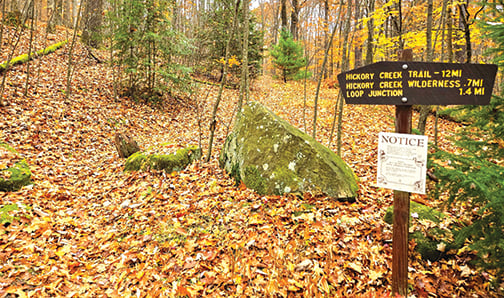Pennsylvania celebrates 40th anniversary for Hickory Creek Wilderness area – Outdoor News

Warren, Pa. — The U.S. Forest Service recently announced the 40th anniversary of the designation of Hickory Creek Wilderness, located in Allegheny National Forest, as part of the National Wilderness Preservation System in 1984.
Hickory Creek Wilderness is located near Tidioute. The wilderness protects 9,337 acres of heavily forested area home to black cherry, oak, beech, birch and eastern hemlock trees.
Two major creeks run through the wilderness, East Hickory and Middle Hickory. Black bears, white-tailed deer and wild turkeys are among the often-observed wildlife in the area.
“It’s our honor to preserve the natural characteristics of the Hickory Creek Wilderness which, provides the public with opportunities for primitive recreation and solitude,” said Forest Supervisor Jamie Davidson.
MORE COVERAGE FROM PENNSYLVANIA OUTDOOR NEWS:
Growing drought conditions take hold across Pennsylvania
101-year-old Pennsylvania hunter has a ‘tremendous drive’
Pennsylvania biologists ‘stunned’ to find invasive western mosquitofish in Glade Run Lake
The Hickory Creek Trail, a 12-mile loop, is the only trail through the wilderness. The trail is minimally signed and maintained, marked with infrequent faded yellow or white blazes.
The loop is a rewarding day-hike or can be an overnight backpacking trip. The trailhead parking area is located along state Route 2002.
The National Wilderness Preservation System was established through the Wilderness Act, signed by President Lyndon B. Johnson in 1964, 60 years ago.
The National Wilderness Preservation System is a network of over 800 federally designated wilderness areas managed to maintain wilderness character by the National Park Service, Bureau of Land Management, U.S. Fish and Wildlife Service, and the U.S. Forest Service.
The definition of wilderness according to the Wilderness Act is, “an area where the earth and its community of life are untrammeled by man, where man himself is a visitor who does not remain … an area of undeveloped Federal land retaining its primeval character and influence, without permanent improvements or human habitation, which is protected and managed so as to preserve its natural conditions.”





